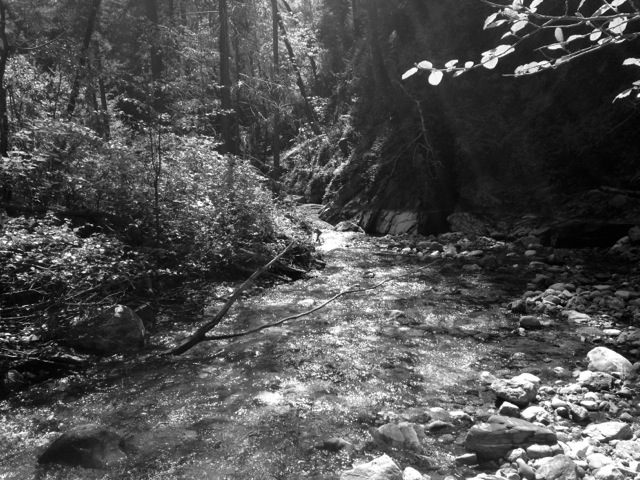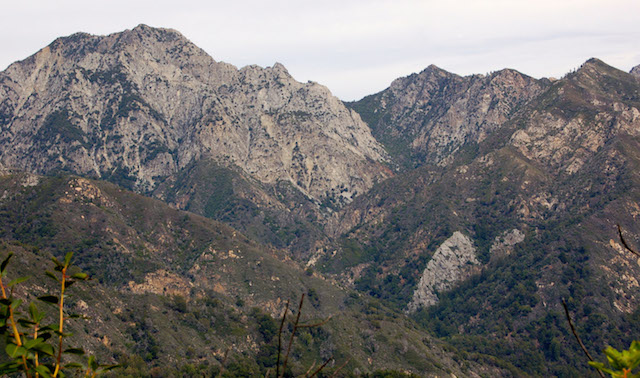In August 1936, Robinson Jeffers joined his 19-year-old son Garth, friend Lloyd Tevis, and Lloyd’s Irish setter on a hike up Ventana Creek in an attempt to summit Ventana Double Cone. Jeffers was 49 years old, and this was his first overnight hiking trip (with the possible exception of a relatively short hike up Pico Blanco two years earlier). They didn’t achieve their objective (fun to visualize an Irish setter climbing the west face of Double Cone), but they managed to select a campsite that would inspire the poet for decades hence.
 |
| Ventana Creek (Dan Jensen) |
Robinson Jeffers is generally misread as a wilderness poet. With a little inspection, one can see that Jeffers generally used nature as a backdrop for human tragedy. The canyon of Ventana Creek was probably the only wilderness experience that the poet ever had, and it left a profound impression upon him. That said, Jeffers could not resist bringing humanity into the picture:
… The revived flameLighted my sleeping son’s face and his companion’s, …
 |
 |
|
| Ventana Double Cone (Dan Jensen) |
Photos: The only likely match, IMHO, for the rock that inspired this poem is the cone-shaped granite rock below Ventana Double Cone, slightly to the right. No granite rock in the canyon of Ventana Creek compares to it.
The poem imparts a sense of the poet standing watch past midnight, but it is more likely he simply had trouble sleeping on gravel.[1] It might not have helped that he didn’t bring a bedroll.
The title of the poem, Oh Lovely Rock, might seem rather trite, though there is a sense in which the title may be appropriate, in that it relates to rock’s “childlike loveliness.” The rock’s face appears aside the face of Jeffers’ son Garth and Garth’s friend in the poet’s mind. There is a intimate, personified presence in the rock, for this monolith hidden alone in the mountains is made of granite—the very rock that gave birth to the poet himself at Carmel Point years before. This is his muse. This great wall of stone might be seen by the poet as the very womb of the stone on which he’d been reborn.
––––––––––––––––––––
A poem from the following winter, Night Without Sleep, presents a more hauntingly beautiful image of Ventana Creek’s “pathless gorge.” The 1936 lyric The Beaks of Eagles, which inspired the Beach Boys song of the same name, also appears to have been inspired—in part—by the same backcountry trip.
This point in Robinson Jeffers’ literary career represents an extension of his work into a greater awareness of wilderness, and also an extension of “Jeffers Country” up the Big Sur River beyond the town of Big Sur.
[1] Garth Jeffers, Poem-Source Anecdotes: “‘Oh, Lovely Rock’ & ‘Hands.’” See Robert Kafka, “Jeffers’s 1936 Ventana Creek Hike: A Miscellany,” Jeffers Studies, Vol. 8, No. 1.
––––––––––
Oh Lovely Rock has been included in the following anthologies:
- The Norton Anthology of Modern Poetry, 1973; eds. Ellman & O’Clair
- The Selected Poetry of Robinson Jeffers, Stanford, 2001; ed. Tim Hunt.
- The Wild God of the World: An Anthology of Robinson Jeffers, 2003; ed. Albert Gelpi.
- Not Man Apart, Sierra Club, 1965 (pg. 116).